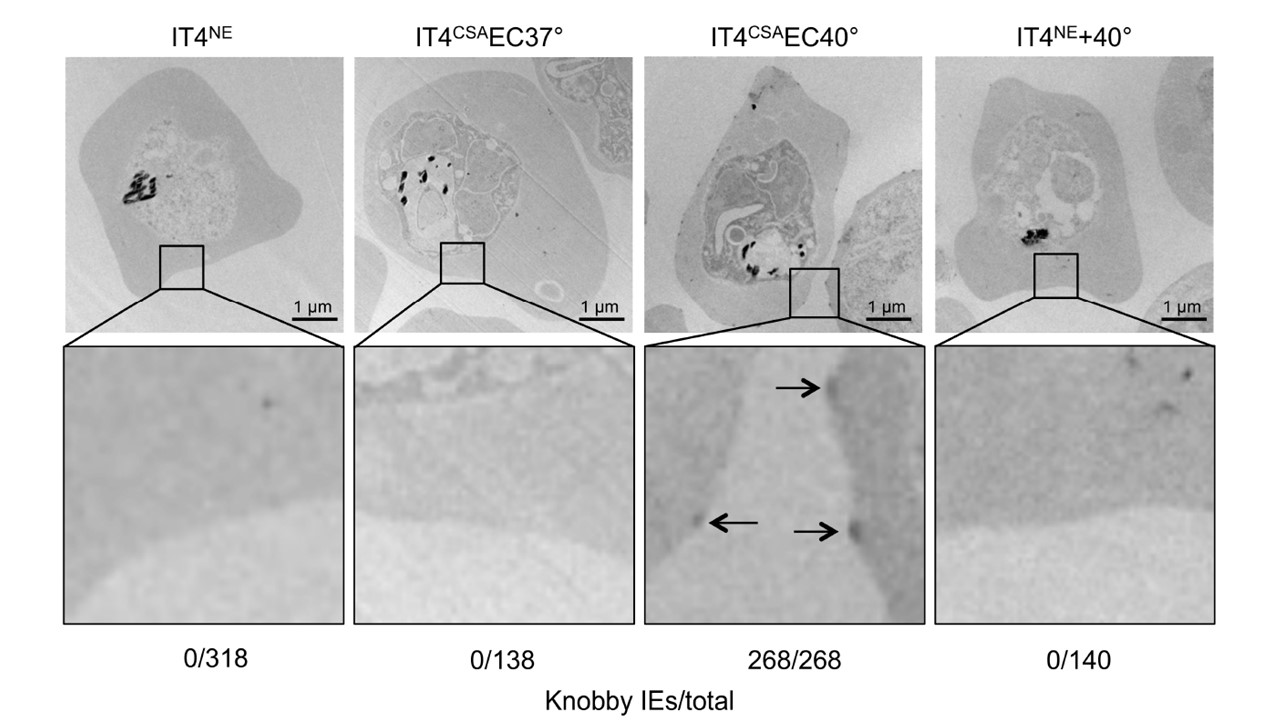Knob formation of IT4 populations enriched for binding to HBEC-5i cells at 37 °C and 40°C. Electron micrographs of erythrocytes infected with IT4NE, IT4CSAEC37°, IT4CSAEC40°, and IT4NE heat-shocked at 40 °C for 2 h weekly over a period of 5 weeks. Arrows indicate knobs. To further determine whether KAHRP was associated with the presence of knobs in the IT4CSAEC40° population, electron microscopy was performed. In accordance with the transcriptome data and protein level observations, all non-enriched (IT4NE, n = 318) and all 37 °C-enriched (IT4CSAEC37°, n = 138) parasites exhibited no obvious aggregation of electron-dense material close to the IE surface. By contrast, electron-dense truncation was observed in the parasite population enriched at 40 °C (IT4CSAEC40°). All 268 quantified IEs from this treatment group exhibited knobs. To determine if occurrence of knobby Ies was promoted by heat shock alone, or whether a combination of heat shock and close proximity to HBEC-5i cells was essential, IT4NE parasites were heat-shocked at 38.5 °C and 40 °C for 2 h weekly over a period of 5 weeks, and subsequently analyzed by electron microscopy. No knob-like formations were observed, indicating that a combination of heat shock and co-incubation with HBEC-5i cells was required to obtain knobby IEs.
Dörpinghaus M, Fürstenwerth F, Roth LK, Bouws P, Rakotonirinalalao M, Jordan V, Sauer M, Rehn T, Pansegrau E, Höhn K, Mesén-Ramírez P, Bachmann A, Lorenzen S, Roeder T, Metwally NG, Bruchhaus I. Stringent Selection of Knobby Plasmodium falciparum-Infected Erythrocytes during Cytoadhesion at Febrile Temperature. Microorganisms. 2020 Jan 25;8(2). pii: E174.
